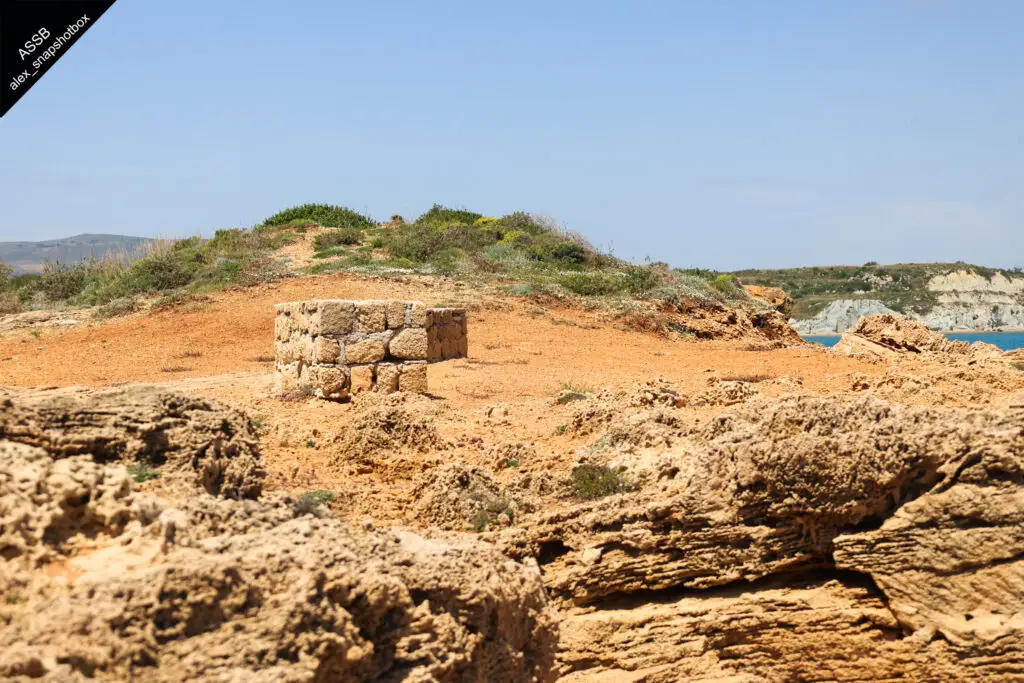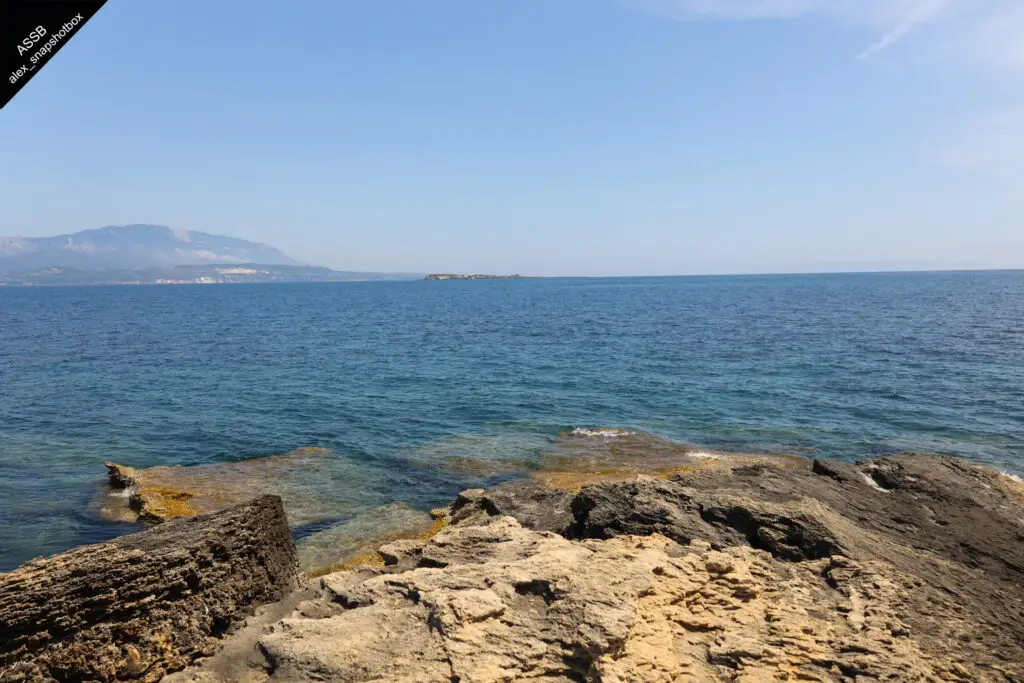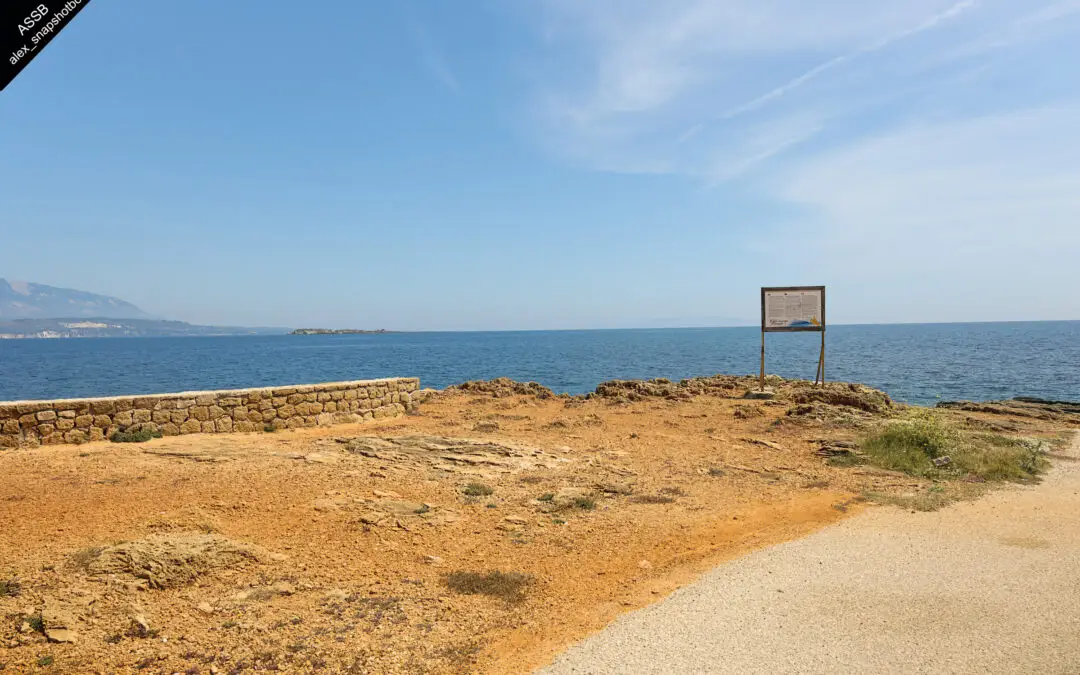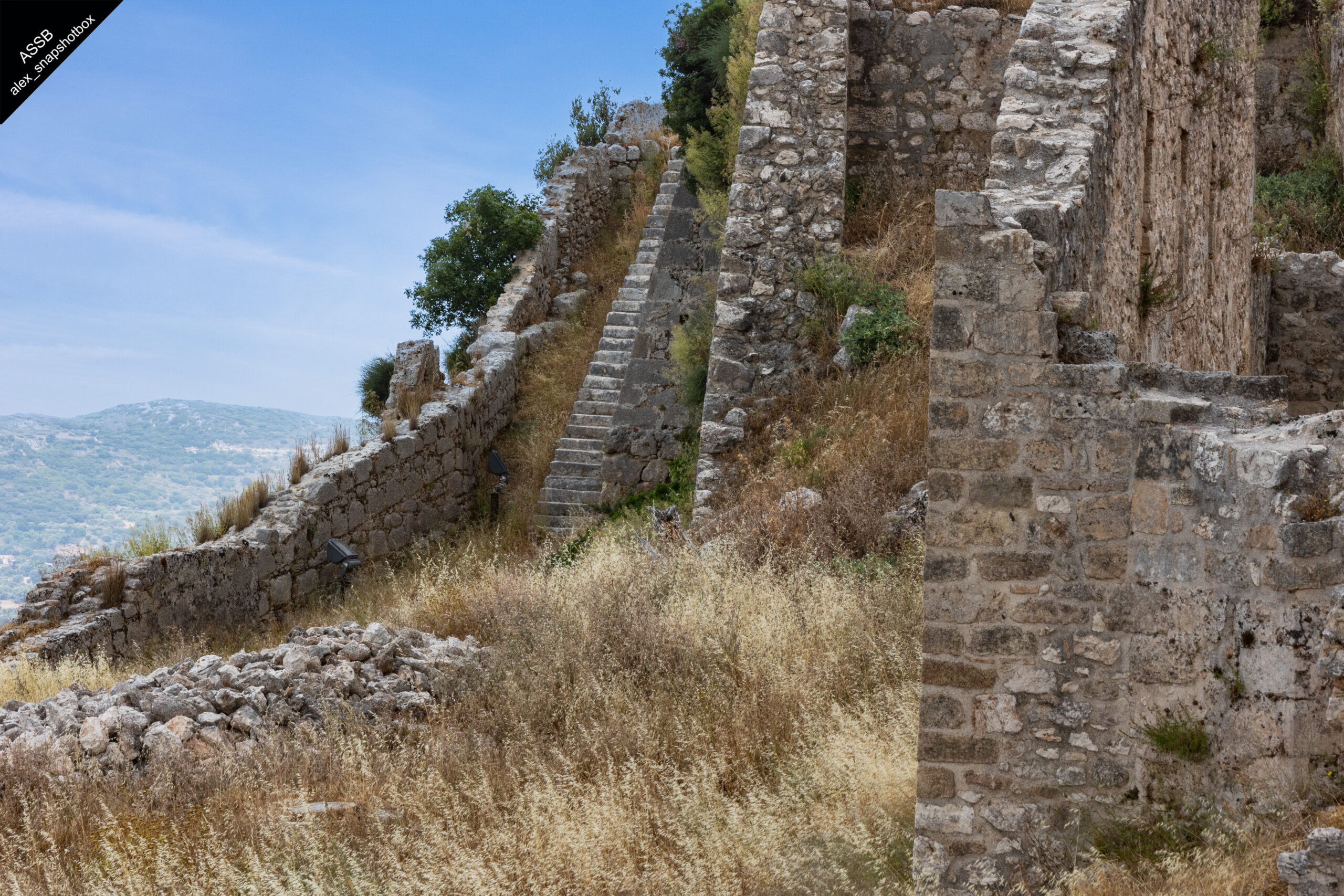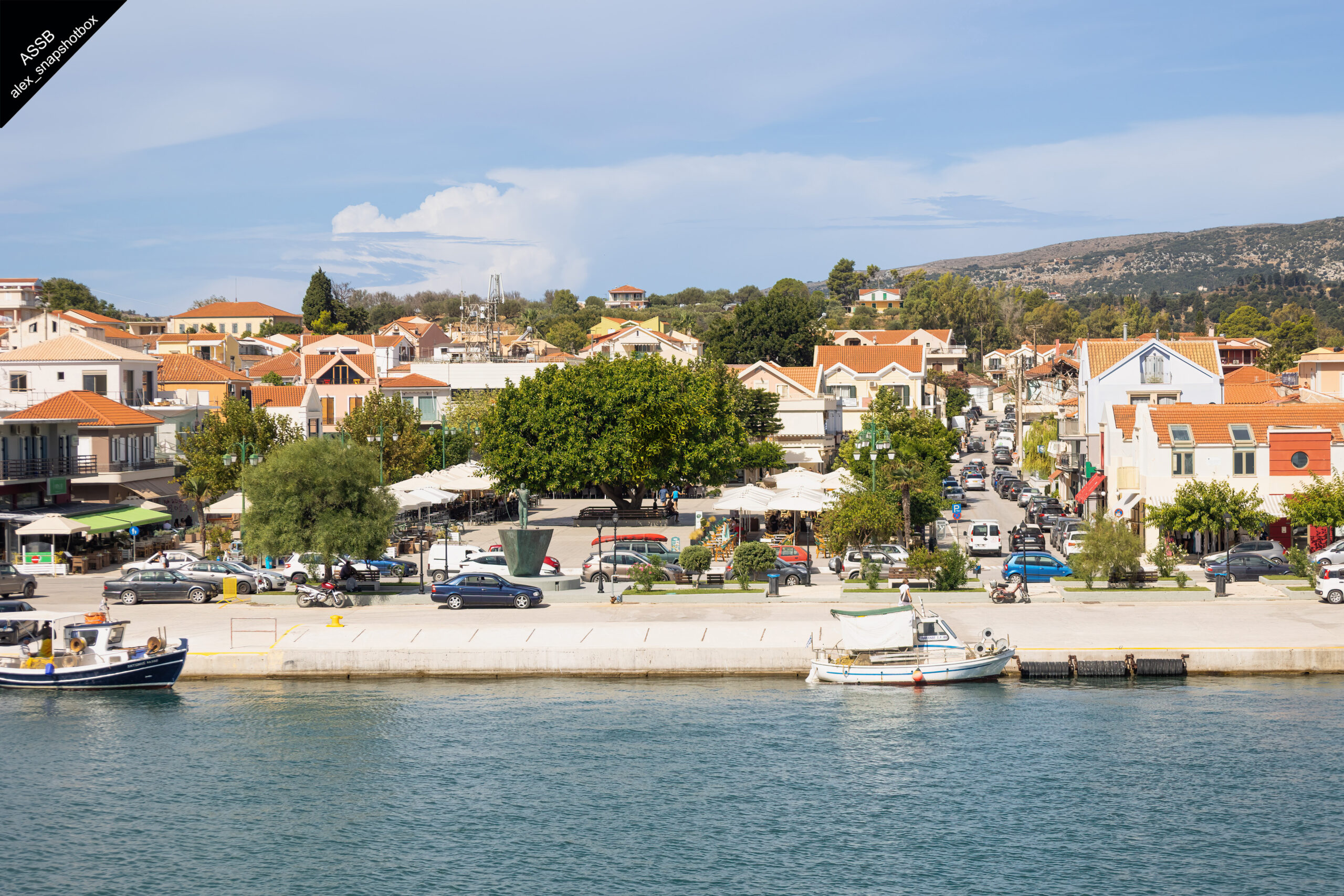There are places that don’t speak loudly but whisper to those who listen.
Kounopetra, on the quiet southern edge of the Paliki peninsula in Kefalonia, is one of them.
Just outside the town of Lixouri lies what appears to be an ordinary rock in the sea — but its history is anything but ordinary.
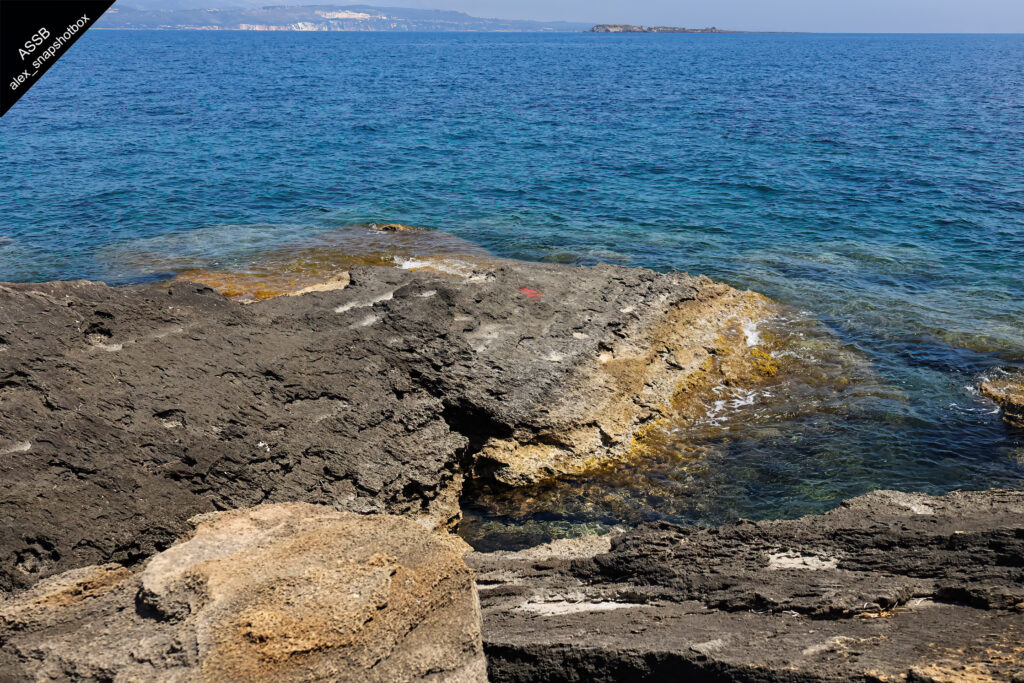
The original ‘KUNOPETRA’
The name Kounopetra means “the rocking stone”, and for centuries, that’s exactly what it was.
A Moving Rock – a Natural Mystery
Until the mid-20th century, Kounopetra was famous for its slow, rhythmic movement.
Not caused by waves or wind, but by some unseen force, the large flat rock would gently sway back and forth in place — steady, deliberate, inexplicable.
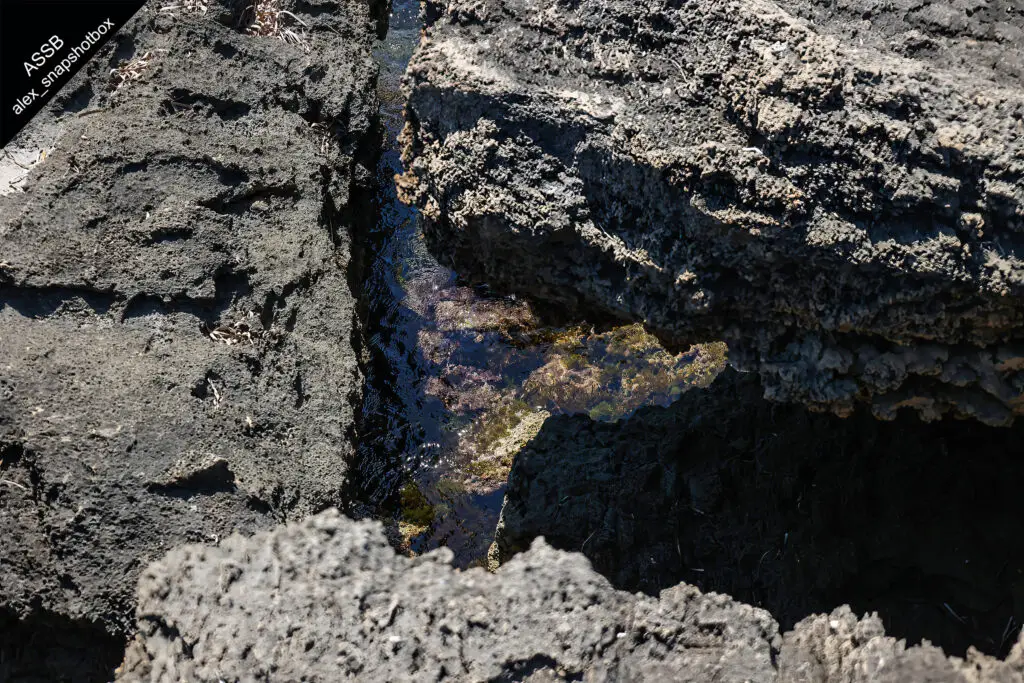
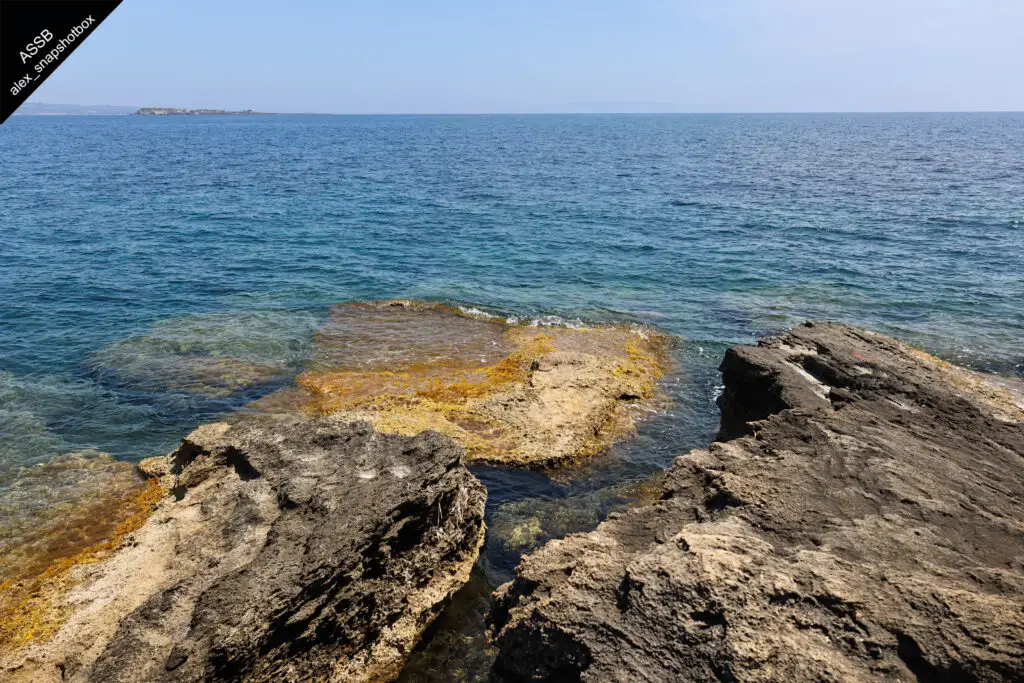
Fishermen spoke of it with awe, travelers wrote of its strange regular motion, and even the British navy attempted to chain it down in the 19th century — but the rock continued to move, defying logic and iron.
Some believed it was a unique geological formation.
Others felt it was something older — a breath from deep within the earth, a sign, or perhaps a memory of something once alive.
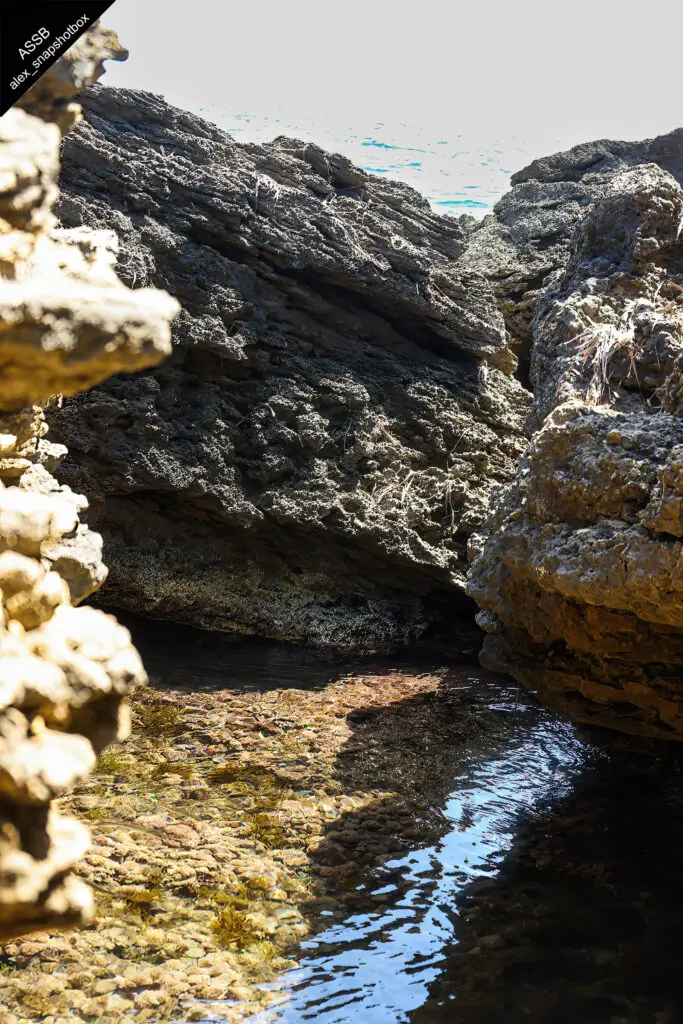
1953 – The Earthquake That Stopped Time
In August 1953, a massive earthquake struck the Ionian Islands, reshaping entire landscapes and devastating villages across Kefalonia.
It also silenced Kounopetra.
Since that day, the rock no longer moves.
It sits still, quiet, heavy — as if whatever force once stirred it has retreated deep underground.
But the story doesn’t quite end there.
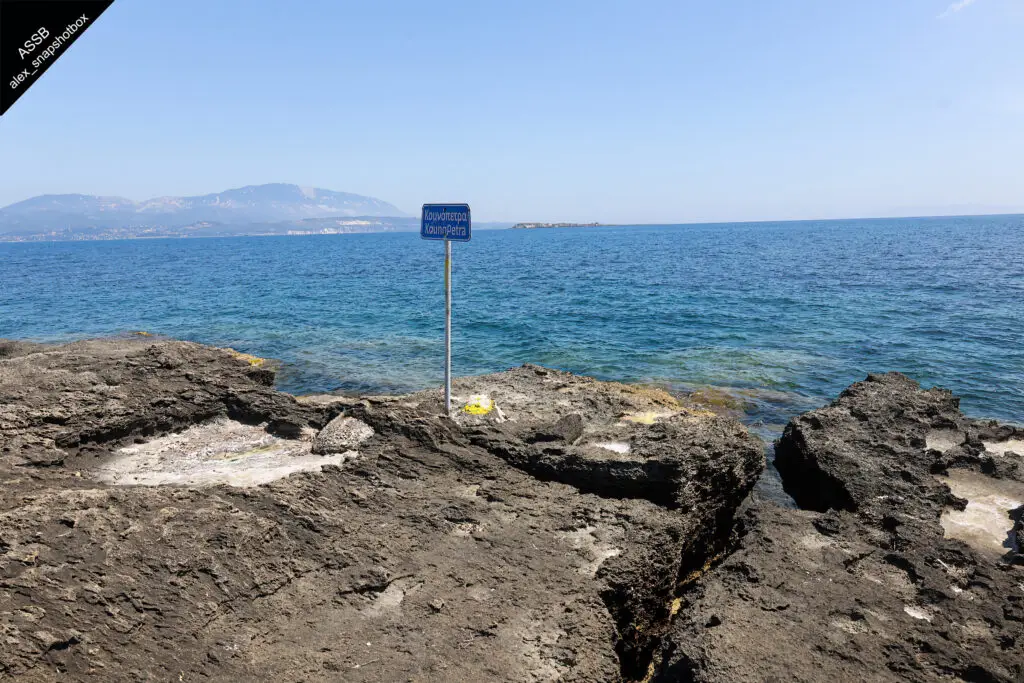
The second stone that moves

The movement can be observed in this crack
A Subtle Secret: The Smaller Rock Still Moves
When visiting Kounopetra today, you’ll find a peaceful coastal scene — blue waters, rugged coastline, and the quiet presence of the motionless rock.
But if you look closely, and read the sign placed discreetly nearby, you’ll discover something remarkable:
“A smaller rock still moves gently in the water.”
Just next to the main rock, a smaller stone continues to sway, ever so lightly.
It’s not dramatic. It won’t draw crowds.
But it moves — as if it carries the memory of its larger counterpart, like a heartbeat that refuses to stop.
Maybe it’s nothing more than a quirk of nature.
Or maybe it’s the final thread connecting this place to something deeper — a rhythm that still echoes beneath the waves.
Why Visit Kounopetra?
Kounopetra is not a typical tourist attraction. You won’t find shops, ticket booths, or souvenir stands.
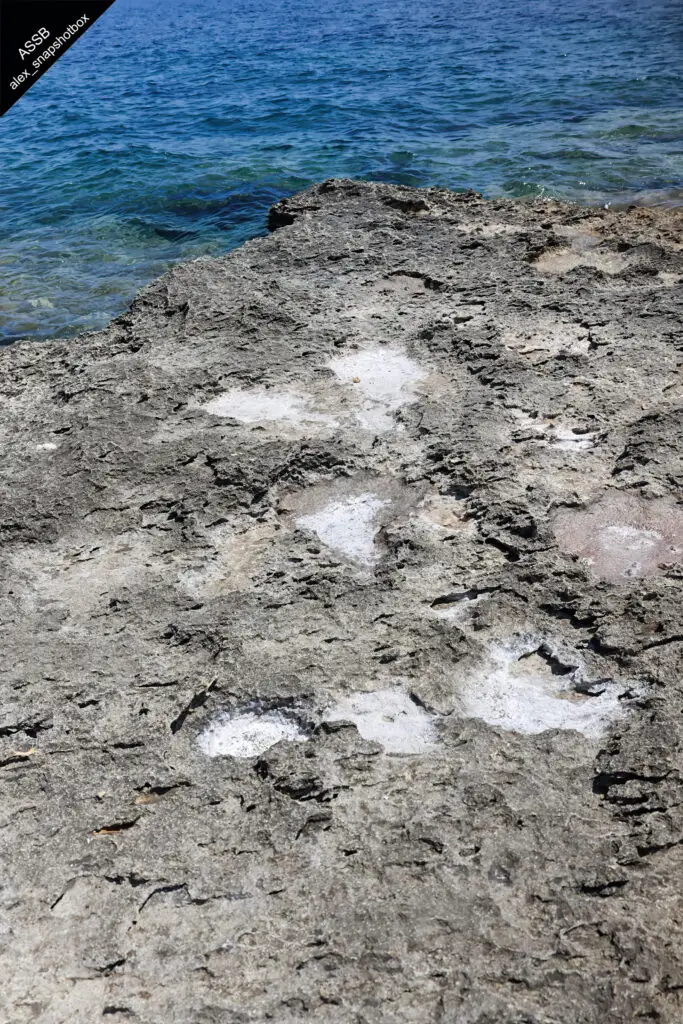

On the right, clear water surrounds the rocks; on the left, salt deposits can be seen in the hollows on the rocks.
What you’ll find is a place suspended between history and myth:
- A stretch of coast that feels untouched
- A viewpoint with a lingering sense of presence
- Nearby beaches like Xi, Vatsa, and Vrachinari, perfect for swimming and sunset
- And a story — or mystery — still anchored in the water
Final Thoughts
Some places don’t just tell stories — they are stories.
Kounopetra is one of those rare places.
A rock that once moved,
a smaller one that still does,
and a sea that remembers.
Maybe the world doesn’t always need answers.
Sometimes, it’s enough to stand still — and listen.
